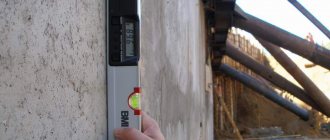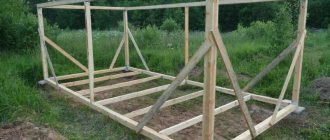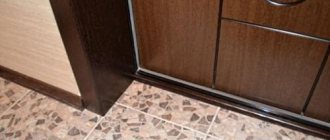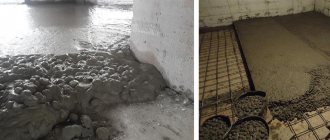Operation and installation of an air conditioner are two of the most important topics that concern both craftsmen and users. But the topic of dismantling is no less important. Typically, such work is carried out by professionals, but many home craftsmen are also interested in this issue.
If the device is out of order and its further operation is not planned, you can dismantle the air conditioning system without saving the refrigerant. But if you want to move the air conditioner to another place, you need to dismantle the air conditioner while preserving the freon.
In this article we will tell you in detail how to properly dismantle an air conditioner while preserving all the refrigerant. It is quite possible to dismantle the split system yourself, but it is important to take into account some nuances. Anyone can dismantle the outdoor unit of the air conditioner and the indoor unit. But to properly preserve freon you need to really try.
Preparatory stage
It involves collecting the tools needed to dismantle the system. It is best to purchase professional equipment, thanks to which it will be most convenient and realistic to remove the split system without losing freon.
For those who do not have a sufficient supply of professional equipment, a number of tools will help in their work:
- Wire cutters.
- Hexagons (size 5-10 mm) to unscrew the fittings.
- Set of wrenches.
- Electrical tape, tape, masking tape.
- Permanent marker.
- Bench vice.
- A reliable knife (a stationery knife will do).
- Stepladder required for dismantling the indoor module.
- Pipe plugs.
- Pliers.
- Screwdriver Set.
- A pipe cutter or hacksaw, which is universal and will be needed in the future on the farm.
- A pressure manifold or pressure gauge, thanks to which you can measure the pressure in the air conditioner, will be needed when it is necessary to pump freon into the outdoor unit. These devices can withstand pressures of 10-15 bar.
- Safety gear and equipment you shouldn't skimp on.
Transportation of freon
When dismantling the outdoor module, the primary task is to “pack” the freon. It is necessary to carry out this procedure efficiently so as not to subsequently waste time and money on refilling the air conditioner. You should pay attention to the accuracy and precision of pumping the refrigerant.
It is possible to reproduce using a pressure manifold or without it. This device will be able to indicate when a vacuum has been reached in the cooling circuit. It is in this case that the second valve should be closed to “pack” the freon inside the condenser.
Step-by-step recommendations:
- connect the pressure gauge manifold to the nipple on the fitting instead of the pipe with the liquid of the cooling circuit (it is thinner compared to the second one, through which gas freon passes);
- if the device is missing, you need to start from the next point;
- put the split system in cooling mode, determining the lowest temperature that the equipment is capable of according to its technical characteristics (you need to find out in the operating instructions). This way the block works for at least 10 minutes;
- close the valve of the liquid pipe (thinner. Closed with a hex key under a protective cap);
- On the manifold, follow the arrow until it reaches the vacuum level. If there is no pressure gauge, you need to mark 1 minute on the clock;
- after the time has elapsed/the desired indicator has been reached on the device, close the valve of the gas pipe with a hex key;
- turn off the air conditioner;
- Put the protective caps back.
How to properly dismantle an air conditioner? Safety regulations
There are certain rules and conditions that must be observed in order to protect health and equipment from breakdowns and malfunctions. Let's list them:
- depressurization of the cooling circuit must not be allowed. It operates under a pressure of 15 A. If there is a sudden leak, there is a high probability of falling under a stream of very low temperature gas;
- you can get frostbite from a stream of cold freon if it leaks;
- When disassembling, it is necessary to avoid the entry of dust and moisture into the circuit, which have a destructive effect on the system;
- when transporting an external unit containing freon, an explosion may occur;
- during transportation, it is necessary to carefully handle the remaining sections of pipes, since their damage will lead to the replacement of the entire unit;
- It is forbidden to unscrew the union nuts from the fittings;
- Care must be taken to handle the latches of the indoor unit so as not to break them.
Common Mistakes
Sometimes, during independent dismantling, errors occur that can affect the technical characteristics during future operation.
Errors include:
Mechanical damage to both units if precautions are not followed. The outdoor module falls from a great height. The appearance of dust in open pipes. Atmospheric air containing water vapor can enter the evaporation compartment. The danger of transporting an air conditioner filled with freon. Possibility of damage to elements during rough transportation of the product.
A person who carefully reads the recommendations for dismantling the air conditioner will cope with the task. The main thing is to follow the rules and stock up on the necessary equipment.
Results
Dismantling and installing an air conditioner are two important topics that we often touch on on the pages of our website. This article is devoted to the pressing question: how to remove the air conditioner yourself without losing freon? This is quite possible if you know the specifics of the work.
You can dismantle air conditioners without saving the refrigerant, but this is only justified if you do not plan to further operate the device. In all other cases, it is better to dismantle the air conditioner while preserving the freon. In this case, it will be possible to move the air conditioner to another room and successfully install it there.
Dismantling work must be done quickly but carefully so that the refrigerant does not leak out. For this reason, we recommend entrusting such work to a professional. Still have questions? Ask them in the comments below. Good luck!
Freon pumping in winter
The difficult task of transferring refrigerant can become more difficult during the cold season, when the air conditioner cannot be turned on. The compressor oil thickens and its smooth operation is impossible. If the equipment is equipped with a “winter kit” that allows the equipment to operate for cooling even at sub-zero temperatures, the problem is easily solved by starting heating devices located in the compressor crankcase and drainage. After 10 minutes of warming up, you can start the climate system for cooling and pump freon, following the recommendations described above.
If there is no winter heating system, you can use a pressure gauge station to collect the refrigerant. It is connected according to the same principle as the collector. Freon is transported there for transportation.
The best way to dismantle
How to dismantle an air conditioner with your own hands? There are several main ways:
- Rough dismantling with release of refrigerant into the atmosphere;
- With preservation of freon for later use.
The first method is simpler, faster and cheaper. But it is only suitable if the device is planned to be disposed of. If you want to remove the air conditioner and then install it in another place, it is recommended to save the freon.
Dismantling while preserving the refrigerant is a difficult and troublesome task. Such work should be entrusted to a professional. But if you are confident in your abilities, you can try to remove the air conditioner yourself.
Upper floors
If the air conditioner is installed on the top floor, then the place must be cordoned off to avoid injury to passersby, as well as damage to other people's property. If a tool or part falls from a great height, it can cause significant harm to a person or a vehicle parked nearby.
You will need safety ropes, as well as other equipment that can protect a person from falling. Working out subsequent actions at height, as well as the location of equipment, will help to avoid difficulties in further work, as well as an accident.
Removing the split step by step
Block outside
Dismantling the external unit of an air conditioner is a difficult and dangerous task. At home, it is not recommended to dismantle it yourself if the outdoor unit of the air conditioner is installed at a height of more than two to three meters from the ground level.
If you are confident in your abilities, read the instructions on how to disconnect the outdoor unit:
- Using a wrench, unscrew the fasteners connecting the fittings and copper tubes. Gently bend them to the side. Cover all openings with masking tape to keep dust and dirt out. Also, in the outdoor unit you can not remove the tubes, but simply bite them off and flatten the ends;
- Next, you need to disconnect the outdoor unit from the power supply. Locate the cover on the block that covers the terminals. Before disconnecting the wires, stick masking tape on top and sign the connection sequence so that in the future you don’t have to remember and rack your brains about where to connect the cables. Disconnect all wires;
- Unscrew the fastening connecting the outdoor unit and the bracket that is fixed to the facade. Usually these are several nuts around the perimeter of the frame. Carefully remove the unit from the bracket.
Unplugging old outdoor units to move them to another location (moving or selling) can be life-threatening. We strongly do not recommend performing high-altitude work unless you are a professional in this matter!
We have dealt with the topic of dismantling the outdoor unit of the air conditioner. Let's move on to the indoor unit.
Block inside
Do-it-yourself removal of the air conditioner does not end with the outdoor unit. It is also necessary to dismantle the indoor unit. This work can be done at home and even alone, but it is better to use the help of a partner.
Removing the block begins with disconnecting it from all communications. In most split systems, all communications are connected to the unit in one place. You can remove the protective plastic plate and reveal the connection location.
Check to see if there are latches on the bottom of the block. Unclip them, carefully move the block away from the wall and try to pick up a bunch of communications and pull it out. If there are no latches, you need to remove the entire front plastic panel and try to find the communications.
Usually the connection of communications is insulated using a special material. The insulation must be carefully cut with a knife, but not completely. It is important to be able to reach the nuts to remove them while maintaining as much integrity as possible of the insulation.
Next follow the instructions:
- Unscrew the union nuts using two wrenches. Cover the open ends of the tubes with masking tape to protect them from dust and dirt. Or the tubes can be cut and their ends flattened;
- Locate the area where the drain tube and drain pan connect. Carefully cut off the tube. You should not do this in a randomly chosen place. Otherwise, it will be more difficult to connect them together when reinstalling the air conditioner;
- Disconnect power and all electrical wires. First, stick masking tape on top and sign the sequence of connecting the cables, so that later it will be more convenient for you to install the device in a new location;
- After disconnecting communications, carefully remove the unit from the wall by unfastening the remaining latches or unscrewing the fasteners. It is better to remove the block together; it is more difficult to do this work alone;
- Remove the mounting plate from the wall.
Please note that the inside of your home air conditioner has a drain pan that may become overfilled. It must be carefully removed and cleaned so that you can then put the device in another place and not waste time on additional cleaning.











